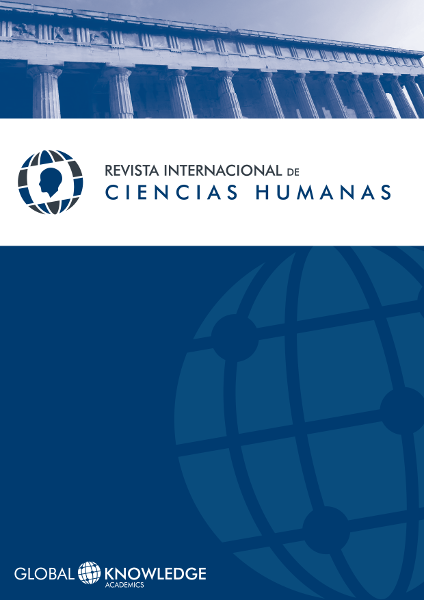Digital Humanities at the Crossroads between Museums and Tourism
DOI:
https://doi.org/10.37467/gka-revhuman.v4.748Keywords:
Digital Humanities, Museology, Creative TourismAbstract
The dialogue between museum and public faces an increasingly challenge, with the growth of cultural tourism, seen as prestigious leisure activity, which allows it to select some destinations, meanwhile others are abandoned. There are new forms of development related to creative tourism, requiring the redefinition of museum activities in association with the other cultural experiences on territory. The relationship between tourism and museum involves the research in digital humanities. The application of technology may enhance the visitor's museum experience. It anticipates the collection knowledge and helps to prepare the museum visit, according to its expectations and experiences. In the museum, it allows him to interact with the exhibition and to access to the additional cognitive resources, and it provides the functional and symbolic context of the object. Finally, after the visit, it restores the memories of the experience. The museum takes back the mediating role as cultural and leisure space, in order to accomplish the creative tourism requirements.
References
Augé, M. (2000). Non-places : introduction to an anthropology of supermodernity. London: Verso.
Bourriaud, N. (2009a). The radicant. New York: Lukas & Sternberg.
Bourriaud, N. (2009b, June 6). Altermodern explained: manifesto. Tate. Retrieved from http://www.tate.org.uk/whats-on/tate-britain/exhibition/altermodern/explainaltermodern/altermodern-explained-manifesto
CHESS. (2013). CHESS: Cultural Heritage Experiences through Socio-personal Interaction and Storytelling: Project: Concept. Retrieved from http://www.chessexperience.eu/v2/project/concept.html
European Commission. (2014). MEMO/14/162: Bringing mummies to life? New tools to make museums more interactive. Bruxelas. Retrieved from http://europa.eu/rapid/pressrelease_MEMO-14-162_en.htm?locale=EN
Europeana. (2013, June 6). Virtual reality and the museum of the future. Europeana blog. Retrieved from http://blog.europeana.eu/2013/12/virtual-reality-and-the-museum-of-the-future/
Europeana. (2014). The internationalisation of European culture. Europeana professional : Pro blog. Retrieved May 27, 2014, from http://pro.europeana.eu/pro-blog/-/blogs/2014227
Goeldner, C. R., & Ritchie, J. R. B. (2003). Tourism principles, practices, philosophies (9th ed.). Hoboken, N.J.: Wiley. Retrieved from https://archive.org/stream/TourismPrinciplesPracticesAndPhilosophies/TourismConceptPrinciplesPractices#page/n5/mode/1up
Great Britain. DCMS. (2001). Creative industries mapping document, 2001. London. Retrieved from https://www.gov.uk/government/publications/creative-industries-mappingdocuments-2001
Guerreiro, D. M., Calixto, J. A., & Borbinha, J. (2012). Bibliotecas Digitais para as Humanidades: novos desafios e oportunidades. Actas Do Congresso Nacional de Bibliotecários, Arquivistas E Documentalistas. Retrieved from http://www.bad.pt/publicacoes/index.php/congressosbad/article/view/354/pdf
Gyr, U. (2010). The History of Tourism: Structures on the Path to Modernity. European History Online (EGO). Retrieved from http://www.ieg-ego.eu/gyru-2010-en
Hall, S. (1997). Representation: Cultural representations and signifying practices. London [etc.]: Sage.
Hutcheon, L. (2002). The politics of postmodernism (2.nd ed.). London: Routledge.
Indianapolis Museum of Art. (n.d.). ArtBabble. Retrieved from http://www.artbabble.org/about-us
Kirby, A. (2006). The death of postmodernism and beyond. Philosophy Now: A Magazine of Ideas, (58). Retrieved from http://philosophynow.org/issues/58/The_Death_of_Postmodernism_And_Beyond
Kirby, A. (2009). Digimodernism: How new technologies dismantle the postmodern and reconfigure our culture. London: Continuum.
Lyotard, J.-F. (1979). La condition postmoderne: Rapport sur le savoir. Paris: Éditions de Minuit.
McKay, A. (2007). Affective communication: towards the personalisation of a museum exhibition. CoDesign, 3 (Suppl. 1), pp. 163–173. doi:10.1080/15710880701333183
McKercher, B., & Cros, H. du. (2002). Cultural tourism : the partnership between tourism and cultural heritage management. New York: Haworth Hospitality Press.
McKercher, B., & Cros, H. du. (2003). Testing a cultural tourism typology. International Journal of Tourism Research, 5 (1), pp. 45–58. doi:10.1002/jtr.417
Musée du Louvre. (n.d.). Louvre: [Site officiel du musée du Louvre]. Retrieved from http://www.louvre.fr/
Musée du Louvre. (2013). Rapport d’activités 2012. paris. Retrieved from http://www.louvre.fr/sites/default/files/medias/medias_fichiers/fichiers/pdf/louvre-rapportactivites-2012.pdf
Parikka, J. (2012). Archives in media theory: material media archaeology and digital humanities. In D. M. Berry (Ed.), Understanding digital humanities. Houndmills, Basingstoke, Hampshire: Palgrave Macmillan. doi:10.1057/9780230371934
Prado, M. del. (2014). Second Canvas Museo del Prado. Retrieved from https://www.museodelprado.es/app/secondcanvasprado/
Pujol, L., Roussou, M., Poulou, S., Balet, O., Vayanou, M., & Ioannidis, Y. (2012). Personalizing interactive digital storytelling in archaeological museums: the CHESS Project. In Computer Applications and Quantitative Methods in Archaeology (CAA). Southampton. Retrieved from http://www.chessexperience.eu/v2/phocadownload/papers/caa2012_paper_final.pdf
Roque, M. I. R. (2012). O museu de arte perante o desafio da memória. Boletim Do Museu Paraense Emílio Goeldi. Belém: Museu Paraense Emílio Goeldi, 7 (1), pp. 67–85.
The Mad Pixel Factory. (2014). Museo del Prado APP. Second Canvas. Retrieved from http://www.secondcanvas.net/product-tour/museo-del-prado-app-esp/#prettyPhoto
The Metropolitan Museum of Art. (n.d.). Heilbrunn Timeline of Art History. Retrieved May 26, 2014, from http://www.metmuseum.org/toah/
The Metropolitan Museum of Art. (2014). The Collection Online. Retrieved from http://www.metmuseum.org/collection/thecollection-online
UNCTAD, & UNDP. (2008). Creative economy report 2008: The challenge of assessing the creative economy : towards informed policy-making. New York. Retrieved from http://unctad.org/es/Docs/ditc20082cer_en.pdf
UNWTO. (2010). International recommendations for tourism statistics : 2008. New York: United Nations. Retrieved from http://unstats.un.org/unsd/publication/SeriesM/seriesm_83rev1e.pdf
UNWTO. (2013). Panorama OMT del turismo internacional. Madrid. Retrieved from http://dtxtq4w60xqpw.cloudfront.net/sites/all/files/pdf/unwto_highlights13_sp_lr_0.pdf
Villaseñor Ferrer, M. del C. (2007). Building echoes: The role of storytelling in museums and galleries. University of London, London. Retrieved from http://pt.scribd.com/doc/23684958/Building-Echoes-The-role-of-storytelling-in-museumsand-galleries
Downloads
Published
How to Cite
Issue
Section
License
Those authors who publish in this journal accept the following terms:
- Authors will keep the moral right of the work and they will transfer the commercial rights.
- After 1 year from publication, the work shall thereafter be open access online on our website, but will retain copyright.
- In the event that the authors wish to assign an Creative Commons (CC) license, they may request it by writing to publishing@eagora.org









